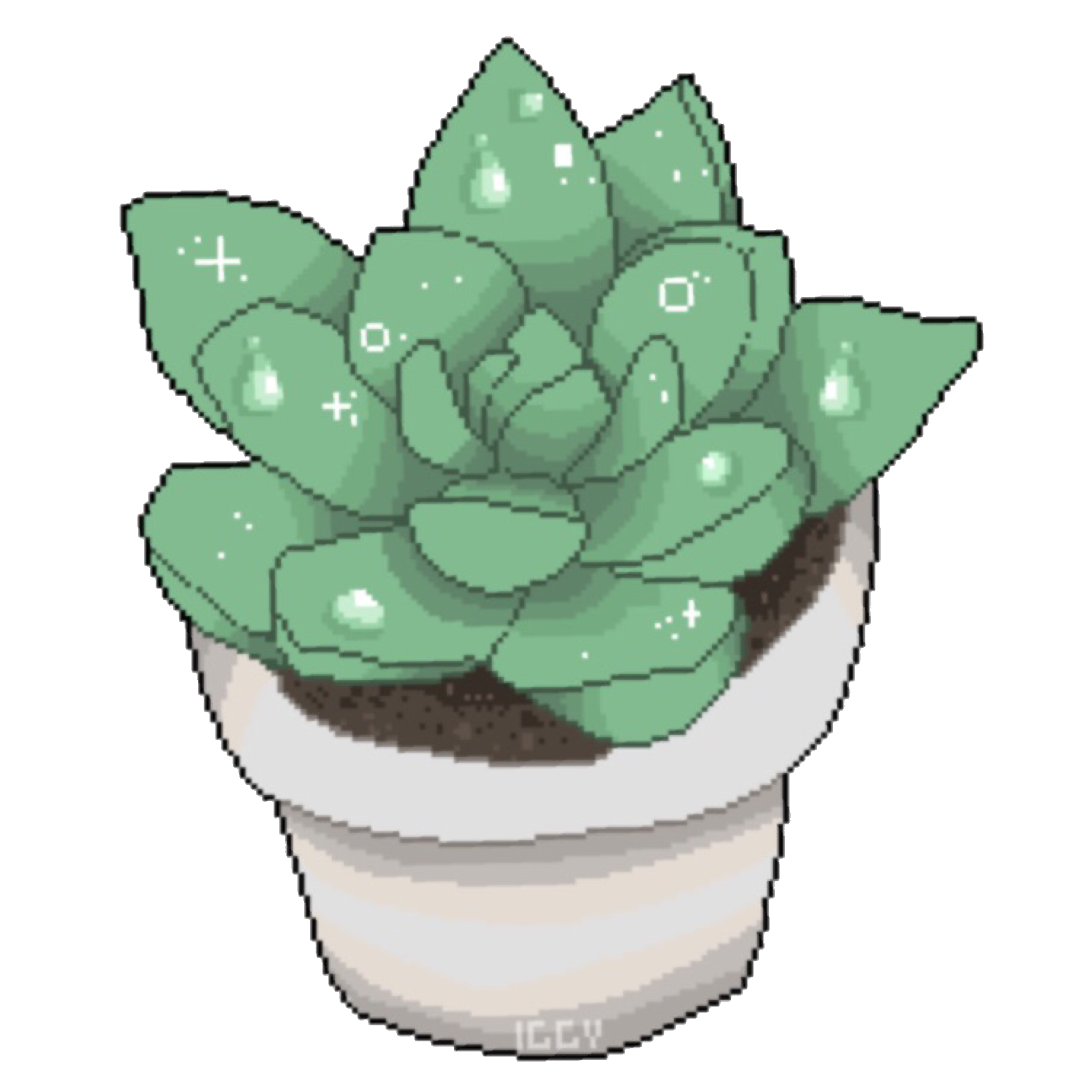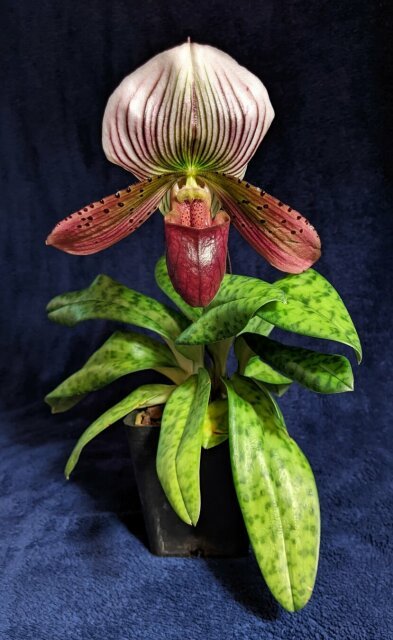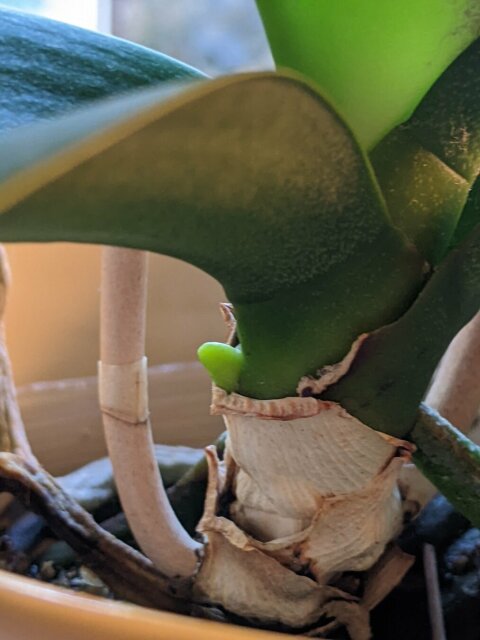- 11 Posts
- 46 Comments

 2·1 year ago
2·1 year agoInteresting about the cinnamon! Sounds like you’re doing a great job.

 1·1 year ago
1·1 year agoThanks! Definitely most of the roots are in the bark, about 4 inches cover and half an inch or so sticking up

 1·1 year ago
1·1 year agoThanks for your comment! That’s reassuring that it’s pretty normal for the stem to be out of the bark. They’re not really aerial roots in that they were completely under the bark in the previous pot. It’s just the top half-inch or inch or so that’s moved up above the bark after repotting. Kind of fun that the roots are so strong to be able to lift up the plant like that!

 2·1 year ago
2·1 year agoCongratulations! What did you do for intense rehabilitation? Did anything else change (sun exposure, temperature, day length)? Hope the momentum keeps up!

 5·1 year ago
5·1 year agoVery nice! Looks like it’s 3D printed, is that right? Do you plant directly into it or is it meant to hold an inner pot?

 2·1 year ago
2·1 year agoWow that’s so special! I’d love to see a picture
 4·1 year ago
4·1 year agoThanks for posting this! I opened RIF this morning to see what would and I was surprised to see that it seems to still work (I didn’t try logging in). I hope it’s what you described and not some kind of mistake that’s going to cost RIF millions of dollars!
On Food and Cooking by Harold McGee is such a special and unique book. I wish there was a book like it for every one of my hobbies! It’s an explanation of what happens during cooking at a molecular level, which gives so much insight into how and why cooking techniques and ingredients work well together. In addition to that it blends in hlthr history of cooking (ancient recipes) and literature. It’s such a wonderful book! I can’t recommend it enough.
I also like Jeffrey Steingarten’s writing. His two books The Man Who Ate Everything and It Must Have Been Something I Ate are a joy to read. He is a good columnist for Vogue, which gives him time and money to do all kinds of elaborate cooking projects and travel. The essays are such a pleasure, full of passion and enthusiasm. and humor. Just as an example, the conceit of the eponymous essay of his first book is that a food columnist should eat all foods – after all, a film critic wouldn’t be allowed to hate whole genres of film. So in the essay he tries to get himself to enjoy all the foods he doesn’t like.

 1·1 year ago
1·1 year agoOn the plus side for Seattle, I’m in fern heaven here! And there are massive tulip farms just outside of town. So I don’t have it so hard here either :)

 1·1 year ago
1·1 year agoWow so cool! I wish I lived in a climate where growing outside on trees was possible. I live in Seattle, not exactly prime territory. Although I would like to learn about orchids native to the area.

 2·1 year ago
2·1 year agoI think overwatering is very common with orchids! They’re different than most plants because they grow attached to trees, not in soil. So their roots are designed to be exposed to the air or just barely covered. They get water from rain that runs over them and then dries off as well as out of the humidity in the air. The houseplants we’re used to growing grow in the soil where the roots are used to being moist. So that makes orchids a little different!
Here is a great video about watering orchids, it gives more details than I did and it’s really helpful because it shows how the roots should look when they need watering. I’ve seen her other videos highly recommended too!

 1·1 year ago
1·1 year agoI will! See my other comment for a book recommendation

 4·1 year ago
4·1 year agoThis book is the one I’ve liked most. It’s more detailed than most of the books I’ve read, which I want! But there are lots of good books out there. What I’ve learned is that flowering is a complex process governed by many different factors and differs between species (of which there are tens of thousands for orchids!).
First it needs to be healthy, so getting appropriate levels of light, water, humidity, and temperature. Then it may need some kind of environmental trigger, this could be daylength/seasonality, change of temperature, or even change in atmospheric pressure from a storm! But then the total opposite too: if a plant is dying it may flower as a last ditch effort at reproducing itself. So basically it’s pretty impossible to make it flower on purpose unless you know the specific needs of your plant, just keep it healthy and hope for the best :)
Generally Phaelenopsis orchids (the most commonly available for sale and iconic type) want to be heavily watered (even soaking the pot for 15-30 minutes) and then allowed to dry almost completely over a week or two, more or less depending on the temperature and humidity. Keeping the soil/bark constantly moist causes the roots to rot, so you want it to dry (but not so much that the leaves get floppy/wrinkly). They like bright but indirect light, which is tricky – not direct sunlight but in a bright location all day. Warm temps, with night time minimums above 60. Higher humidity (mist them with a sprayer sometimes if you can). At least that’s what I have taken away from the reading I’ve done!

 1·1 year ago
1·1 year agoIt’s pretty good! I have only listened to a few episodes so far. I have tended to skip through the first 30-40% of the episodes, which has been a lot of discussion of the guest’s academic training and career, which isn’t very interesting to me personally. After they finish talking about that, I usually enjoy the rest of each episode!

 1·1 year ago
1·1 year agoWow! Good luck getting to 100! What city are you in?
I heard about the orchid project on this podcast episode, a pretty interesting interview: https://www.indefenseofplants.com/podcast/2022/5/29/ep-371-the-million-orchid-project

 3·1 year ago
3·1 year agoThis is pretty out of the box. It’s just something we’ve wanted to do for awhile and we’re using the 4th of July as an opportunity:
DIY nacho bar: everyone gets a cookie sheet, there’s a table with various chips, cheeses, and toppings, and you take turns under the broiler
DIY sundae bar: same thing, but ice cream (and no broiler!)
Yes, not many foods would look very good if you judged based on a version from an airport! Relatedly I try not to remember a city based on the surroundings of the airport, it’s usually a pretty grim area.

 1·1 year ago
1·1 year agoWhat a cute idea! How many have you given away so far?
Reminds me a bit of the Million Orchid Project, where plants are given to community members and schools to plant out in their community https://fairchildgarden.org/science-and-education/science/million-orchid-project/
I love how paprika will extract the ingredients and cooking instructions from a recipe site so I don’t have to hunt through a page that’s a mile long!







Unfortunately can’t help you there as this one was in bloom when I got it :)
Has yours grown additional side growths? As far as I understand each fan of leaves only blooms once, then the side growths have to mature and those will each bloom once and so on.